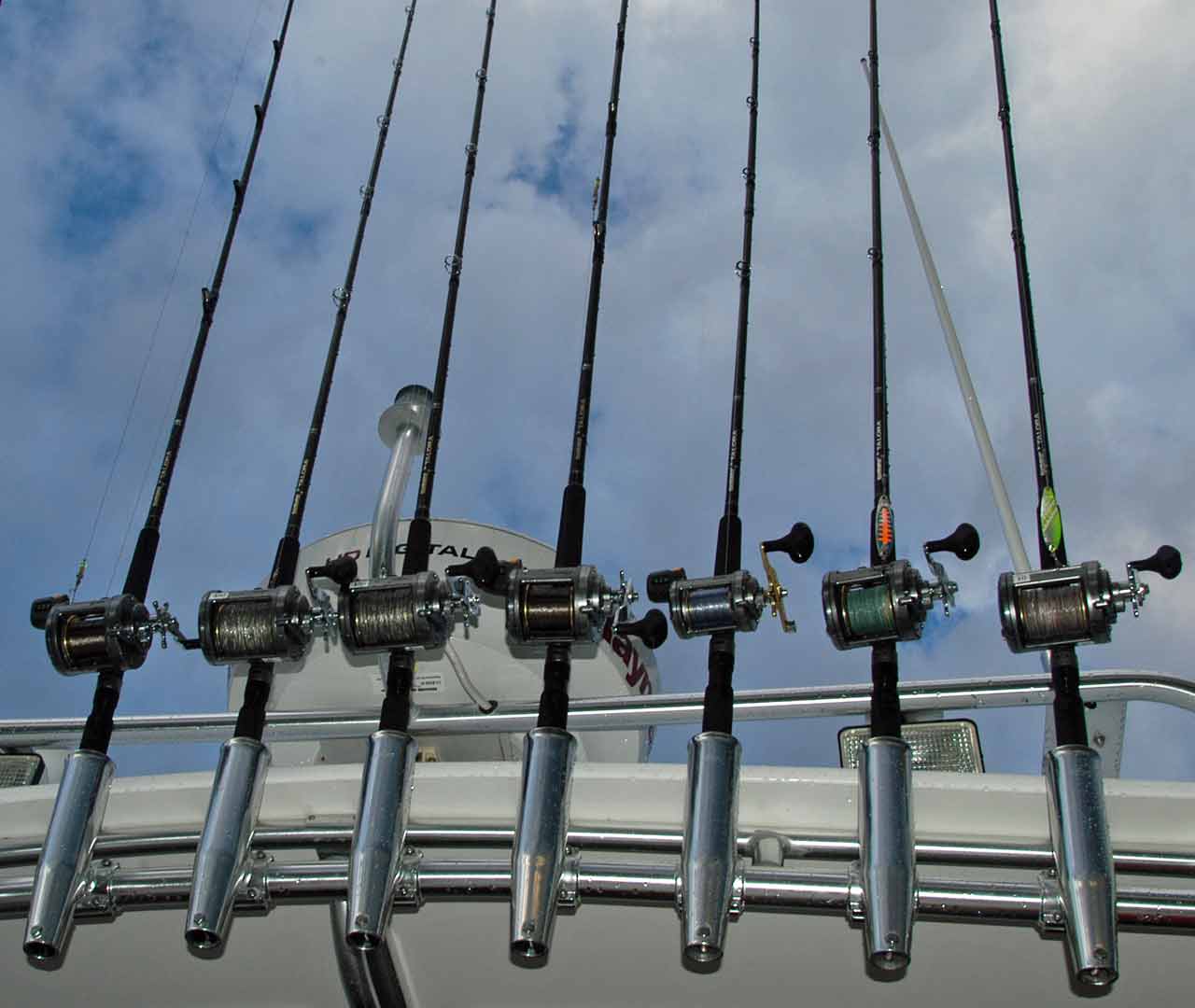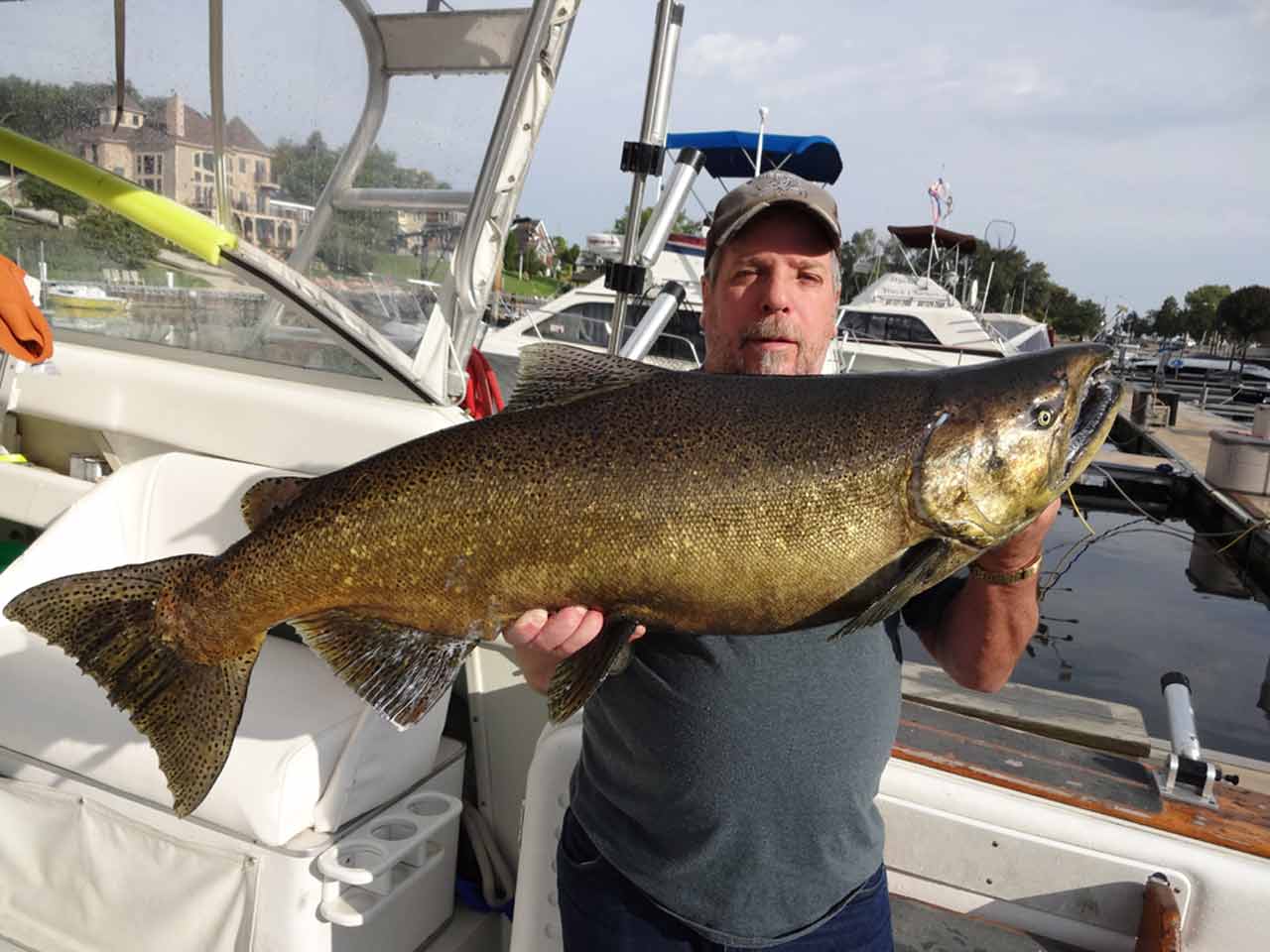Fish Species
Home » Fish Species
Lake Michigan Fish Species
Identification – The interior of the mouth of the Brown Trout is entirely white. Lake run brown trout usually are silver, just like Coho. However, once out of the water the typical large round spots, accented by a light colored hollow, begin to show. Normally the anal fin has only 9-10 rays, which separate it from other trout and salmon.
Habits – In the Great Lakes, fishing for brown trout are near-shore fish and are taken water trolling or surf casting. Usually brown trout in the Great Lakes are plumper than their inland lake and stream counterparts (similar to football shape) because of the super abundance of forage in the Great Lakes.
 Identification – Best identifying characteristic is teeth set in black gums. The base of the tail flares like the handle of a canoe paddle, offering the angler a grip sufficient to lift the fish. Like the Coho, the interior of the mouth will also be gray or black. Tail spots are usually restricted to the top half of the tail, but may also appear on the lower half. The anal fin usually has 15 to 17 rays. Chinook Salmon do not jump and roll as much as Coho, but have tremendous power and make long reel-screaming runs.
Identification – Best identifying characteristic is teeth set in black gums. The base of the tail flares like the handle of a canoe paddle, offering the angler a grip sufficient to lift the fish. Like the Coho, the interior of the mouth will also be gray or black. Tail spots are usually restricted to the top half of the tail, but may also appear on the lower half. The anal fin usually has 15 to 17 rays. Chinook Salmon do not jump and roll as much as Coho, but have tremendous power and make long reel-screaming runs.
Habits – Open-water fishing is the best in spring and summer, as with Coho. Migration to parent streams begin in late summer, with heavy concentration at stream mouths. Stream fishing peaks sometime in September, at the onset of spawning runs.
 Identification – Tail spots are concentrated on the top of the tail. The interior of the mouth is usually gray or black, but the gums are whitish. The anal fin usually has 12 to 15 rays. Also, while on the line, coho often roll sideways, many times entangling themselves in the tackle.
Identification – Tail spots are concentrated on the top of the tail. The interior of the mouth is usually gray or black, but the gums are whitish. The anal fin usually has 12 to 15 rays. Also, while on the line, coho often roll sideways, many times entangling themselves in the tackle.
Habits – In spring and summer, coho can be found in open waters near concentrations of alewives or smelt – usually within 10 miles of shore in the upper 20 to 40 feet. In August and September, they concentrate in schools near mouths of the parent streams. Sometime in September, they begin ascending the spawning streams in waves.
 Identification -Color pattern is mostly gray above and white below with creamy white mottling on the back, grading to spots on the side – no red or pink. The tail is distinctly forked.
Identification -Color pattern is mostly gray above and white below with creamy white mottling on the back, grading to spots on the side – no red or pink. The tail is distinctly forked.
Habits – Pre-eminently a deep-water and cold-water fish. In spring and during fall spawning season, when water is still very cold, lake trout may be taken in lake edge shallows. They too will run up rivers in the fall, and become quite accessible to anglers below the large dams which block and concentrate the runs. Summer and winter, they are taken by trolling and still fishing or “bobbing” in 50 to 200 feet of water.
 Identification – The interior of the mouth is white, unlike either Coho or Chinook. Also, the entire tail area is potted. Cheek plates and sometimes a line along the side are a rosy pink. Normally, the anal fin has 10-12 rays.
Identification – The interior of the mouth is white, unlike either Coho or Chinook. Also, the entire tail area is potted. Cheek plates and sometimes a line along the side are a rosy pink. Normally, the anal fin has 10-12 rays.
Habits – Steelhead spawn in the spring, as early as March, but they begin entering the spawning streams as early as the preceding September. A recently introduced summer-run strain of Steelhead may enter the streams in mid-summer. Special early and late seasons are held to take advantage of these runs. Stream fishing is prime in October, November, March and April. In late spring and summer, Steelhead can be found in big water – usually within a mile of shore at depths of less than 50 feet.






